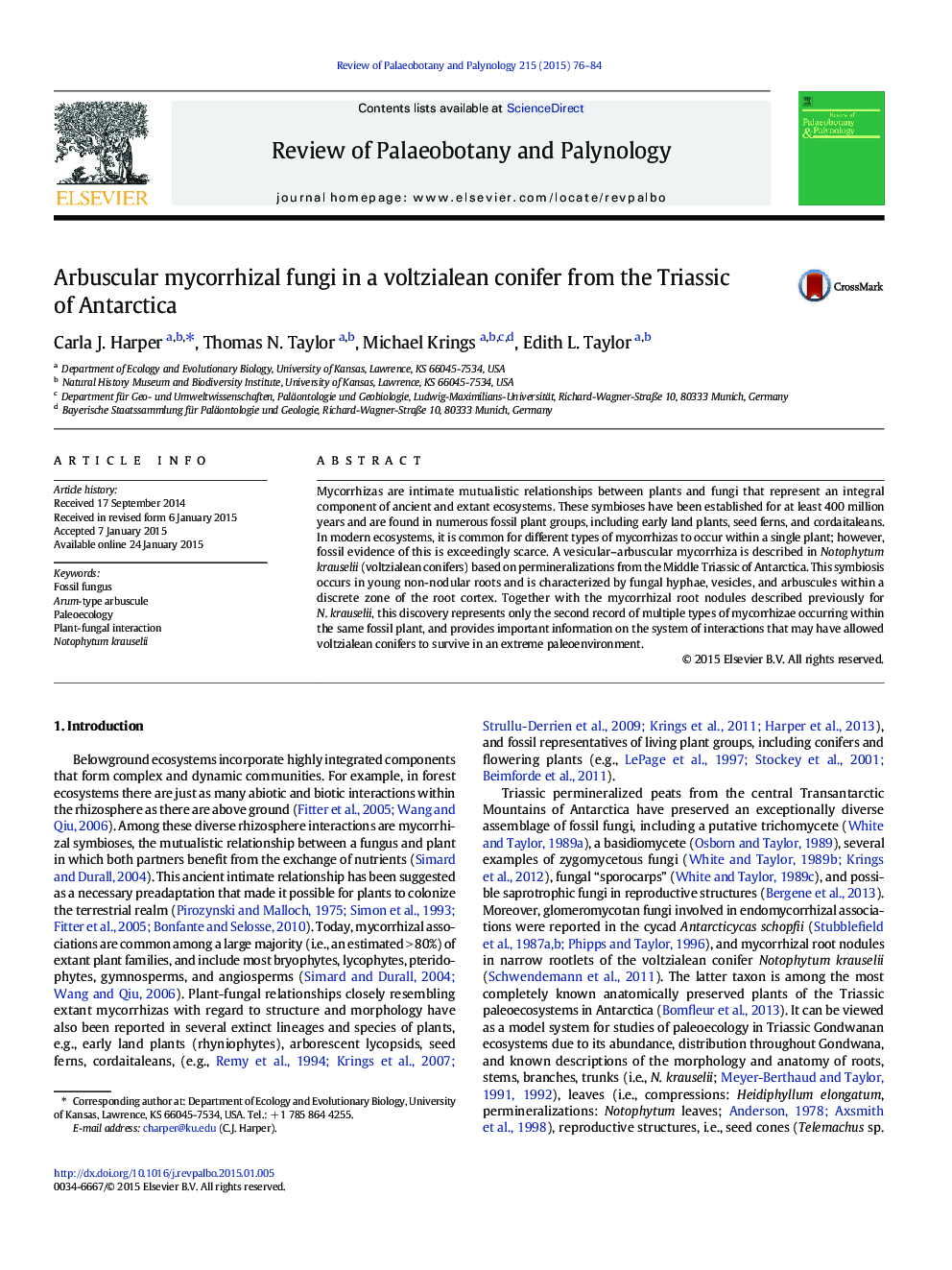| Article ID | Journal | Published Year | Pages | File Type |
|---|---|---|---|---|
| 4750250 | Review of Palaeobotany and Palynology | 2015 | 9 Pages |
•Vesicles and arbuscules occur in Triassic voltzialean conifer roots.•Thin sections and focal stacking techniques were used in study.•Multiple levels of mycorrhizal symbioses occur in voltzialean conifers.•Fungal associations were likely important in early transitional conifers.•Provides insight into evolution of conifer-mycorrhizal associations
Mycorrhizas are intimate mutualistic relationships between plants and fungi that represent an integral component of ancient and extant ecosystems. These symbioses have been established for at least 400 million years and are found in numerous fossil plant groups, including early land plants, seed ferns, and cordaitaleans. In modern ecosystems, it is common for different types of mycorrhizas to occur within a single plant; however, fossil evidence of this is exceedingly scarce. A vesicular–arbuscular mycorrhiza is described in Notophytum krauselii (voltzialean conifers) based on permineralizations from the Middle Triassic of Antarctica. This symbiosis occurs in young non-nodular roots and is characterized by fungal hyphae, vesicles, and arbuscules within a discrete zone of the root cortex. Together with the mycorrhizal root nodules described previously for N. krauselii, this discovery represents only the second record of multiple types of mycorrhizae occurring within the same fossil plant, and provides important information on the system of interactions that may have allowed voltzialean conifers to survive in an extreme paleoenvironment.
